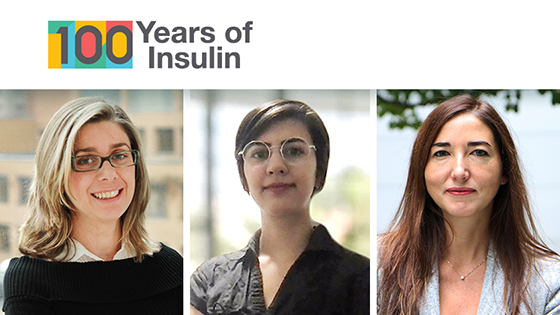Just as plants need roots to gather nutrients from the soil, cell transplants need to build connections with their host environment to survive and function. Vascularization, the formation of blood vessels between the transplant and recipient, is crucial to the success of cell therapies. (Photo: iStock)
Human pluripotent stem cells have the potential to transform themselves into all the different kinds of cells of the body, including the cells of the pancreas that produce insulin.
Harnessing this potential through cell transplants could revolutionize diabetes treatment. The new insulin source would help patients manage their blood sugar levels, potentially eliminating the need for insulin injections by syringe or pump.
Drs. Cristina Nostro and Sara Nunes Vasconcelos, with their postdoctoral fellow, Dr. Yasaman Aghazadeh, have engineered a new method to improve the survival and potency of such cell transplants.
The research team, which included researchers at the McEwen Stem Cell Institute and the Toronto General Hospital Research Institute, showed that transplanting tiny blood vessels called microvessels with pancreatic cells reversed diabetes in laboratory models of the disease.
“When cells are transplanted, they face hostile conditions that very few will survive,” says Dr. Nunes Vasconcelos. “The transplanted cells need to be well connected with the host’s blood supply so that they can receive oxygen and nutrients, and deliver insulin in response to high sugar levels in the blood.”

In their study, the researchers isolated and recycled readily available microvessels from fat tissue to support the survival of cells transplanted under the skin. They paired the microvessels with two different groups of pancreatic cells: 1) donor islets, which are small portions of the pancreas that contain fully developed cells that can produce insulin; and 2) pancreatic cells derived from stem cells that can generate islets after transplantation. The latter have the advantage of not being limited by donor shortages.
Upon transplanting the cells and microvessels into laboratory models, the team found that the microvessels were able to integrate with the host blood vessels, forming dense connections like the roots of a tree. With these stable and robust networks, the transplants retained up to six times more cells after three months than those without microvessels.
In addition to improving the survival of the cell transplants, the microvessels accelerated the reversal of diabetes in laboratory models.
“When co-transplanted with microvessels, the stem cell-derived pancreatic cells started to normalize blood sugar levels seven weeks after transplantation, while the cells transplanted alone did not,” says Dr. Nostro. “Remarkably, co-transplantation of microvessels with donor islets could normalize sugar levels immediately.”
The new method comes alongside the 100th anniversaries of the discovery and first injections of insulin. Following its discovery by Frederick Banting and Charles Best at the University of Toronto, insulin was given for the first time to a patient with diabetes in 1922 at Toronto General Hospital.
This hundred-year history of innovation continues with Dr. Vasconcelos and Dr. Nostro’s research, which moves us one step closer to a potential long-term treatment for diabetes: one in which insulin-producing cell transplants are able to restore healthy levels of insulin to the body.
This work was supported in part by UHN Foundation donors.


